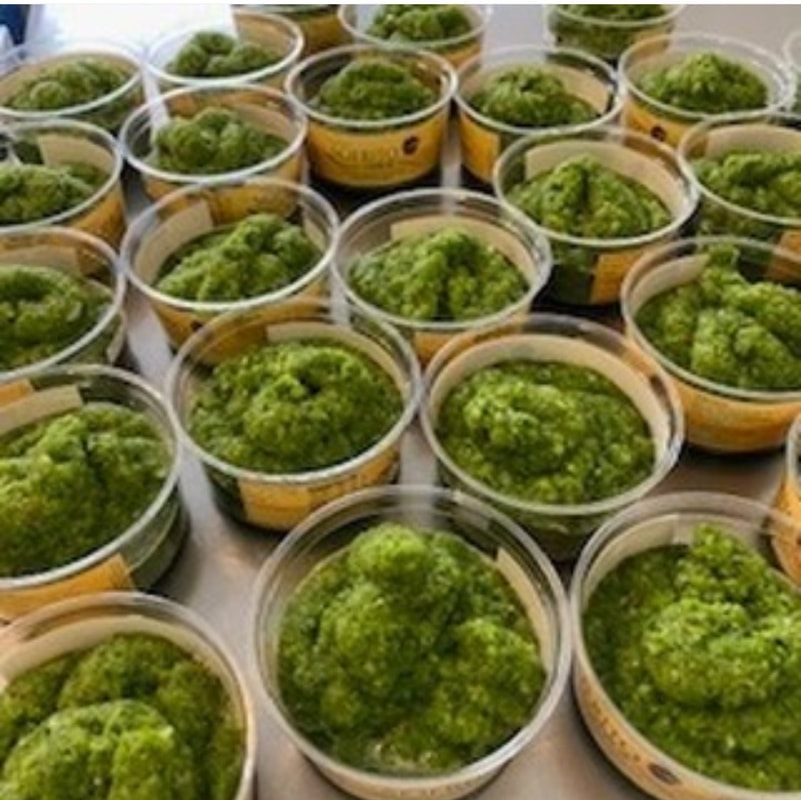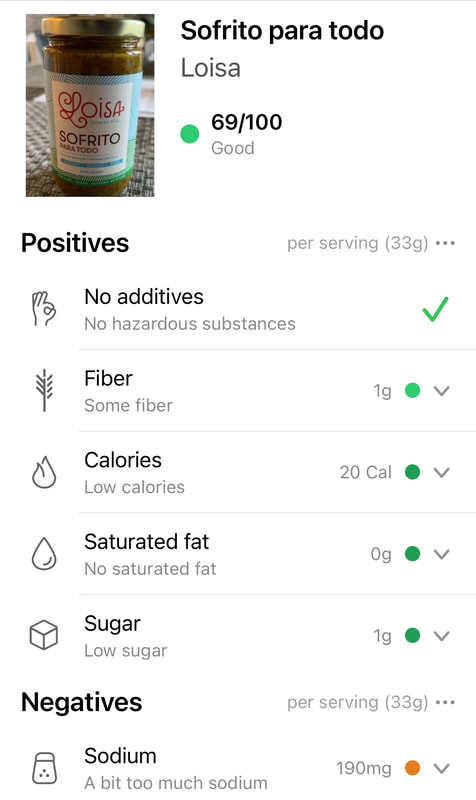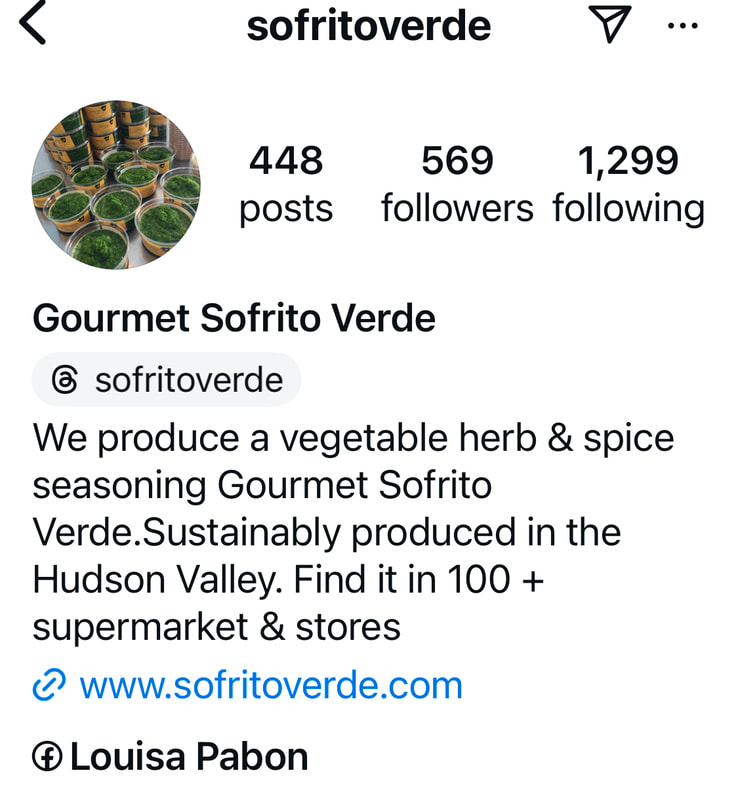Sofrito |
Buy Sofrito items
|
|
Sofrito (Spanish, Spanish: [sofɾito]), sofregit (Catalan, Catalan: [sufɾə'ʒit]), soffritto (Italian, Italian: [sofˈfritto]), or refogado (Portuguese, Portuguese: [ʁɨfuˈɣaðu])
is a basic preparation in Mediterranean, Latin American, Spanish, Italian and Portuguese cooking. It typically consists of aromatic ingredients cut into small pieces and sautéed or braised in cooking oil for a long period of time over a low heat. In modern Spanish cuisine, sofrito consists of garlic, onion and peppers cooked in olive oil, and optionally tomatoes or carrots. This is known as refogado, sufrito, or sometimes as estrugido in Portuguese-speaking nations, where only garlic, onions, and olive oil are considered essential, tomato and bay laurel leaves being the other most common ingredients. In Italian cuisine, chopped onions, carrots and celery is battuto, and then, slowly cooked in olive oil, becomes soffritto. It may also contain garlic, shallot, or leek. Mediterranean The earliest mentioned recipe of sofrito, from around the middle of the 14th century, was made with only onion and oil. In Italian cuisine, chopped onions, carrots and celery is battuto, and then, slowly cooked in olive oil, becomes soffritto. It may also contain garlic, shallot, or leek. In Greek cuisine, sofrito refers to a dish that is found almost exclusively in Corfu. It is served less commonly in other regions of Greece and is often referred to as 'Corfu sofrito' outside of Corfu. It is made with veal or beef, slowly cooked with garlic, wine, herbs, sugar and wine vinegar to produce an umami sauce with softened meat. It is usually served with rice and potatoes. Latin America Sofrito being prepared from bell pepper, onion, garlic, and herbsIn Venezuelan cuisine, the sofrito also called aliño has four main ingredients as its aromatic base: garlic, onions, bell pepper and sweet chili (ají dulce) generally fried in corn oil. This chili is presumed to be a non-spicy variation of crops originated in the Andean mountains, created by the selective cultivation of the indigenous populations of Margarita Island and the coastal regions of Venezuela [9] from where it was later adopted by some of the Caribbean colonies. It is used as a base for most of Venezuelan dishes including pabellón criollo, asado negro, pastel de chucho, and hallaca. Sometimes other secondary components are added such as tomato, spring onions, parsley or coriander, depending on the dish. In Cuban cuisine, sofrito is prepared in a similar fashion, but the main components are Spanish onions, garlic, and green or red bell peppers. Ají cachucha is also often used instead of or in addition to bell peppers. It is a base for beans, stews, rices, and other dishes, including ropa vieja and picadillo. Other secondary components include tomato sauce, dry white wine, cumin, bay leaf, and cilantro. Chorizo (a kind of spicy, cured sausage), tocino (salt pork) and ham are added for specific recipes, such as beans. In Dominican cuisine, sofrito is also called sazón. Dominican sofrito mostly depends on what is available. Chopped cubanelle pepper or bell pepper, red onion, garlic, and lippia (Jamaica oregano) are always a part of its typical cuisine and sometimes this is the only seasoning. Other ingredients added depending on availability are cilantro, culantro, celery, tomato paste or fresh tomatoes, sour orange, vinegar, or sweet chili peppers. Dominicans also add alcaparrado (olives) for some of their dishes. In Puerto Rican cuisine, sofrito is used in a variety of dishes such as rice dishes, sauces, soups, among other typically Puerto Rican dishes. The two main ingredients that give Puerto Rican sofrito its characteristic flavor are recao (culantro) and ají dulce, but red and green cubanelle peppers, red bell peppers, pimientos, orégano brujo, yellow onions, garlic, tomato sauce, and cilantro are also added. Traditionally red peppers are roasted until black and some of the skin is removed before they are added to the sofrito. Sofrito is made in large batches and blended until it resembles a smoothie, bottled and stored in a refrigerated or frozen for use later. Tomato sauce is a part of sofrito but is added only when cooking is in progress and not blended into the batch. Sofrito is sautéed in lard, oil or annatto oil until most of liquid has evaporated. cured pork (ham, sausage, or salted pork), and a mix of stuffed olives and capers called alcaparrado is usually added with bay leaf, cumin, coriander seeds, and adobo. Asia In Filipino cuisine, ginisá is a culinary term that refers to a base of garlic, onions, and tomatoes sautéed together with cooking oil. It is essentially similar to the Spanish sofrito. |
Recipes
Typical ingredients used in sofrito:
https://girlmeetsfire.com/sofrito/
- Peppers: Aji dulce and green bell peppers are popular choices. I also like to use a little red, orange, or yellow if I have it in my garden. For a bit of a kick, you can add jalapeno peppers to it.
- Onions: I love to use large Spanish onions.
- Garlic: The more the better.
- Herbs: Fresh cilantro and culantro.
https://girlmeetsfire.com/sofrito/
Goya SofritoSed ut perspiciatis unde omnis iste natus error sit voluptatem accusant doloremque laudantium, totam rem.
|
Sofrito VerdeMade in the Hudson Valley, totally authentic, absolutely no preservatives
and the best flavor, ever. Gourmet Sofrito Verde is a healthy, authentic Latino product. With a special blend of vegetables, herbs and spices puree, it is made completely fresh into a condiment to season everything from meat to mushrooms, fish to salads...and so much more. It's completely versatile! Click here to find it! Click here to buy online! Verde & Co. is a woman owned business based in Sullivan County New York.
| ||||||
Here are some of the top-selling sofrito brands that you might want to try:
- Sofrito Santa Elena: Known for its authentic and natural ingredients, this brand is highly praised for its rich flavor and versatility Buy on Amazon
- Conchita Spanish Sofrito Seasoning: This brand offers a vibrant blend of flavors that can enhance a variety of dishes
- Montero Sofrito Mix: A dry mix that is free from salt and MSG, making it a healthier option
- Loisa Sofrito Cooking Sauce: Non-GMO and free from preservatives, this sauce is a favorite for its pure Latin flavor
- Campolor Chef El Original Sofrito: Available in different variations like with albahaca (basil) or cilantro, this brand is appreciated for its unique taste Buy on Amazon 1 pkg
Building a National Brand
Interested in applying for the Local and Emerging Accelerator Program (LEAP)?
If you’re a small brand or up-and-coming supplier looking to work with us, LEAP is for you. The initiative, which launched in 2022, advances Whole Foods Market’s core value of seeking win-win partnerships with local suppliers. With this program, we aim to grow local and emerging producers through education and mentorship.
If you’re a small brand or up-and-coming supplier looking to work with us, LEAP is for you. The initiative, which launched in 2022, advances Whole Foods Market’s core value of seeking win-win partnerships with local suppliers. With this program, we aim to grow local and emerging producers through education and mentorship.






















